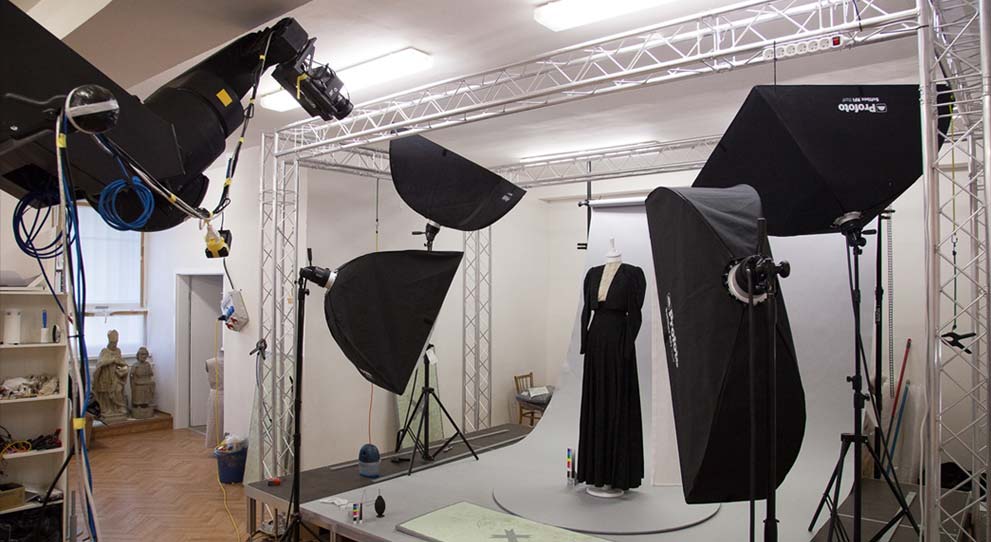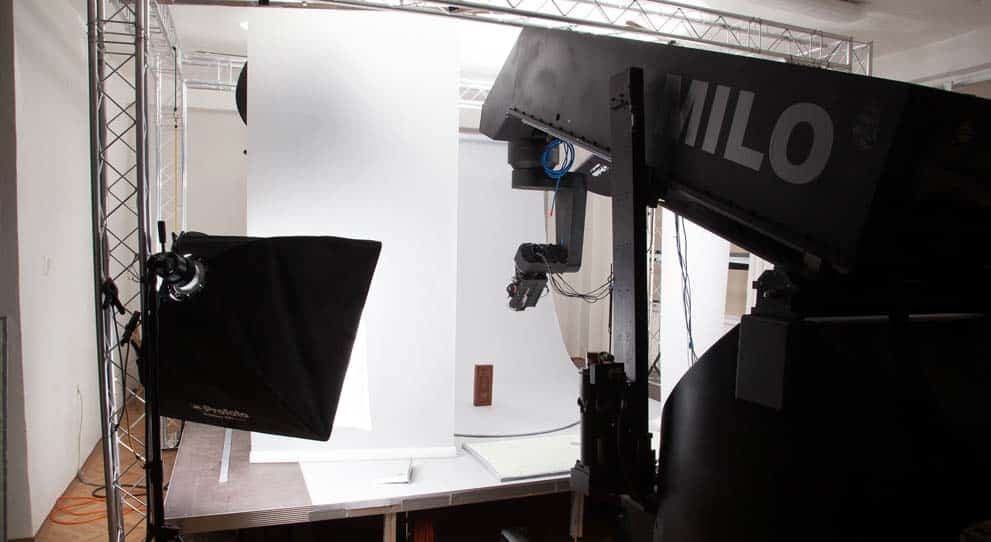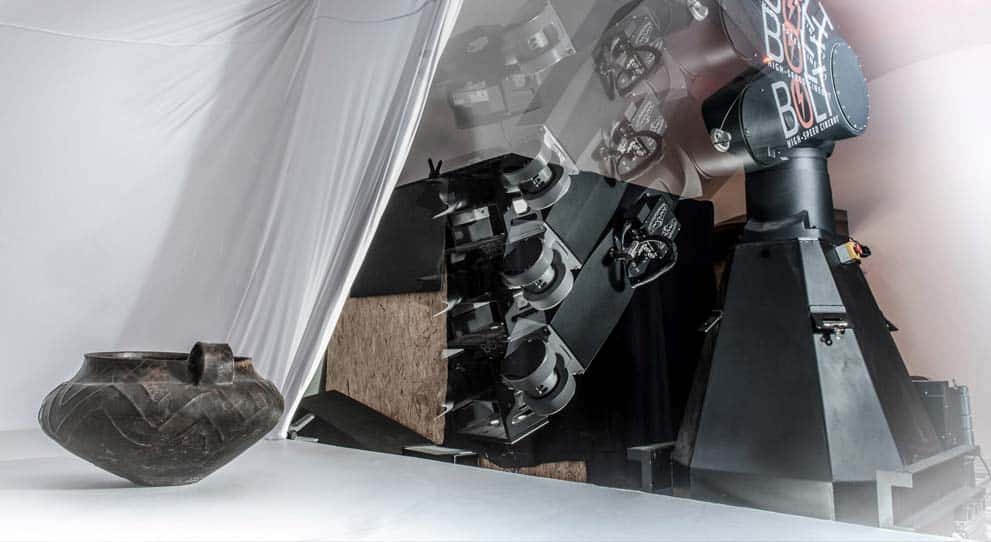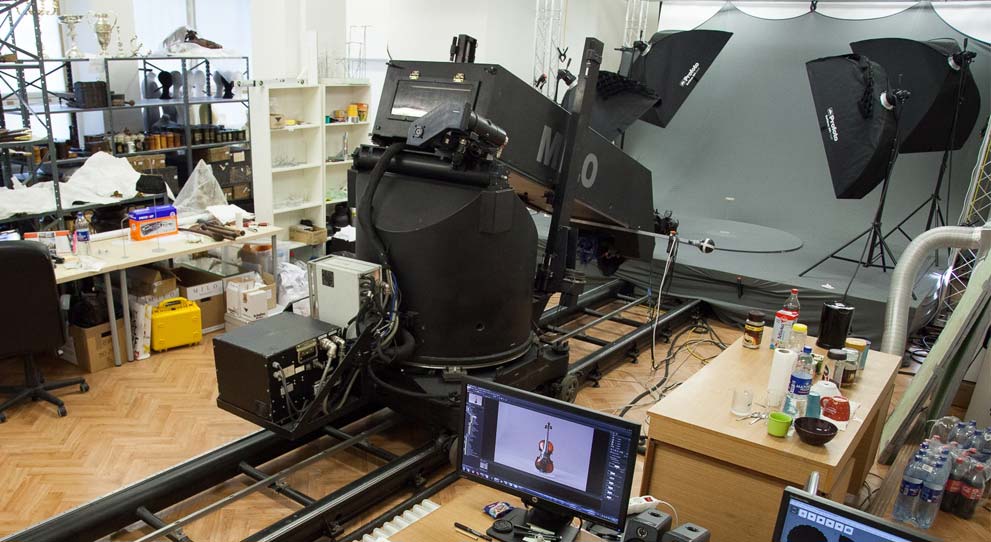Orbital and Moco rigs for Studio 727 panoramic project
Case Study
The Museum of Slovak National Uprising in Banska Bystrica led the nation-wide project and was funded through The Ministry of Culture of the Slovak Republik and by the European Union. Project managed by TMG, they hired in Studio 727 specifically to undertake the huge task of digitising approximately 10 million photos. The purpose was to capture sets of photos to give viewers a full 360-degree panoramic view.
The Museum of Slovak National Uprising in Banska Bystrica led the nation-wide project and was funded through The Ministry of Culture of the Slovak Republik and by the European Union. Project managed by TMG, they hired in Studio 727 specifically to undertake the huge task of digitising approximately 10 million photos. The purpose was to capture sets of photos to give viewers a full 360-degree panoramic view.

LOGISTICS, LOGISTICS, LOGISTICS!
The scope of the project posted a logistical nightmare. Not only were there 55 locations that all needed visiting, but there was also the entire gamut of museum artefacts, which came in all shapes and sizes. Then there were the museum buildings themselves, plus all the issues of getting inside with the equipment and then actually setting up the shoots (lighting, backgrounds, equipment etc.).
The project also required that each artefact be photographed 144 times (4 elevations, with each level taking 36 photos), so that – if needed – they could be turned into 3D objects. With the task of taking 72,000 photos of each artefact 144 times, this meant Studio 727 had to come up with a solution to take 10 million photos!
Time was also a major factor. The project was funded by a government grant and the EU, and it had stringent time considerations attached. Factor in a time limit to an already complex and challenging undertaking and this compounded the vital importance of needing highly automated and sophisticated equipment to complete the project.
The scope of the project posted a logistical nightmare. Not only were there 55 locations that all needed visiting, but there was also the entire gamut of museum artefacts, which came in all shapes and sizes. Then there were the museum buildings themselves, plus all the issues of getting inside with the equipment and then actually setting up the shoots (lighting, backgrounds, equipment etc.).
The project also required that each artefact be photographed 144 times (4 elevations, with each level taking 36 photos), so that – if needed – they could be turned into 3D objects. With the task of taking 72,000 photos of each artefact 144 times, this meant Studio 727 had to come up with a solution to take 10 million photos!
Time was also a major factor. The project was funded by a government grant and the EU, and it had stringent time considerations attached. Factor in a time limit to an already complex and challenging undertaking and this compounded the vital importance of needing highly automated and sophisticated equipment to complete the project.

ROBOTIC SOLUTIONS BY NUMBERS
The means to carry out a project of this size required not only manpower but also equipment – namely robotic equipment sophisticated enough to automate as much of the workload as possible. Although 727 looked at multiple solutions, only MRMC had the range of robotics to fully cope with the logistics and workload.
Studio 727 used eleven MRMC rigs – five Orbital Rigs, two Bolt™ CineBots, a Milo a Talos and a Modula. As the entire range of MRMC robotics are programmable, it was a case of then using the different robots for the different tasks of capturing the images. All the robots ran from the same software user interface so the operations between the robots remained the same. The captured images were streamlined to flow into 727’s capture database and using innovative tools they greatly simplified any post-processing required.
The means to carry out a project of this size required not only manpower but also equipment – namely robotic equipment sophisticated enough to automate as much of the workload as possible. Although 727 looked at multiple solutions, only MRMC had the range of robotics to fully cope with the logistics and workload.
Studio 727 used eleven MRMC rigs – five Orbital Rigs, two Bolt™ CineBots, a Milo a Talos and a Modula. As the entire range of MRMC robotics are programmable, it was a case of then using the different robots for the different tasks of capturing the images. All the robots ran from the same software user interface so the operations between the robots remained the same. The captured images were streamlined to flow into 727’s capture database and using innovative tools they greatly simplified any post-processing required.
AT LEAST ONCE A MONTH, WE HAD TO MOVE THE WHOLE WORKPLACE TO A NEW LOCATION. THE MODULA WAS THE PERFECT RIG FOR EASY TRANSPORTATION.

RIGS OVERVIEW
- The Orbital is a product photography rig capable of taking a high volume of photos in a short period of time. Given that each of the artefacts needed 145 individual photos in order to create a 3D image, the Orbital provided a perfect automated solution. Studio 727 simply programmed in the moves, and with a single click could capture all 144 photos for a single artefact.
- The Bolt was used to photograph a high volume of different museum products. The Bolt also runs on a track, which made it much more versatile when capturing larger items or other awkward heritage items.
- The Milo is MRMCs flagship robot. Larger than the Bolt it was used in bigger spaces in the museums and set up in a similar fashion for repeatable precise moves. It seldom had to be moved and therefore could be set up to run continuously as needed for a huge volume of artefacts.
- The Talos is designed to fit into much smaller spaces – it can pass through a normal sized door. It was perfect for more awkward or cramped locations and could be moved from room to room as needed.
- The Modula, as the name suggests can break down into smaller sections allowing both easier shooting capabilities and ease of movement from one location to another. “At least once a month we had to move the whole workplace to a new location.
- Turntables were also provided by MRMC of varying sizes to rotate all the objects. Certain situations required shots from either above, below or even both – with objects suspended between.
- The Orbital is a product photography rig capable of taking a high volume of photos in a short period of time. Given that each of the artefacts needed 145 individual photos in order to create a 3D image, the Orbital provided a perfect automated solution. Studio 727 simply programmed in the moves, and with a single click could capture all 144 photos for a single artefact.
- The Bolt was used to photograph a high volume of different museum products. The Bolt also runs on a track, which made it much more versatile when capturing larger items or other awkward heritage items.
- The Milo is MRMCs flagship robot. Larger than the Bolt it was used in bigger spaces in the museums and set up in a similar fashion for repeatable precise moves. It seldom had to be moved and therefore could be set up to run continuously as needed for a huge volume of artefacts.
- The Talos is designed to fit into much smaller spaces – it can pass through a normal sized door. It was perfect for more awkward or cramped locations and could be moved from room to room as needed.
- The Modula, as the name suggests can break down into smaller sections allowing both easier shooting capabilities and ease of movement from one location to another. “At least once a month we had to move the whole workplace to a new location.
- Turntables were also provided by MRMC of varying sizes to rotate all the objects. Certain situations required shots from either above, below or even both – with objects suspended between.

THE RESULTS
The project took just over 24 months, in which time 72,331 museum artefacts had been photographed and Studio 727 had collected over 10 million photos using MRMCs robotics. In summary:
The Orbital Rig captured: 27,146 objects up to 10cm in size
Two Bolts, two Taloses, one Modula & one Milo captured: 32,104 objects from 10 to 70 cm in size | 13,081 objects over 70 cm in size
Cameras used:
NIKON D800 (36 megapixel photos). Objects between 0-70cm in size
PhaseOne (80 megapixel photos). Objects over 70cm in size
- The project took just over 24 months, in which time 72,331 museum artefacts had been photographed and Studio 727 had collected over 10 million photos using MRMCs robotics. In summary:The Orbital Rig captured: 27,146 objects up to 10cm in sizeTwo Bolts, two Taloses, one Modula & one Milo captured: 32,104 objects from 10 to 70 cm in size | 13,081 objects over 70 cm in sizeCameras used:NIKON D800 (36 megapixel photos). Objects between 0-70cm in size
PhaseOne (80 megapixel photos). Objects over 70cm in size
